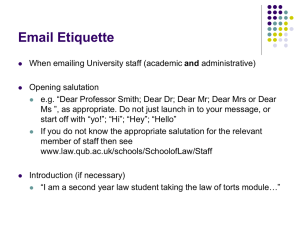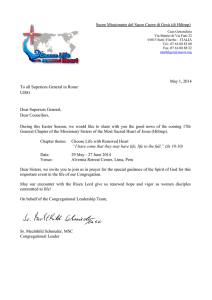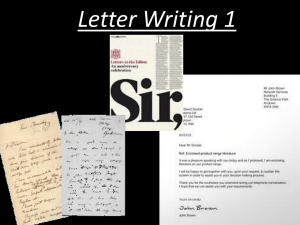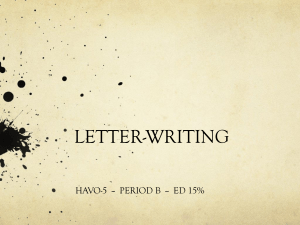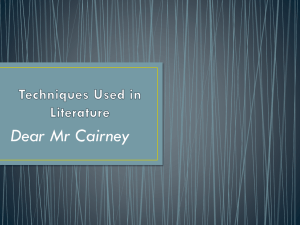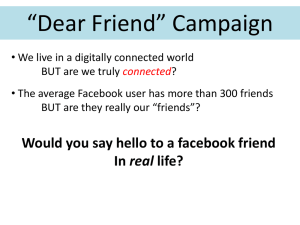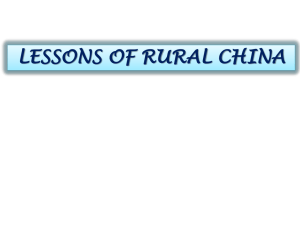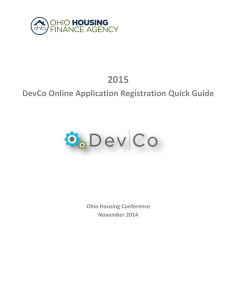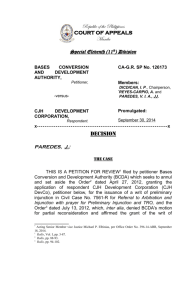(DEAR) by Markus Pirchner
advertisement
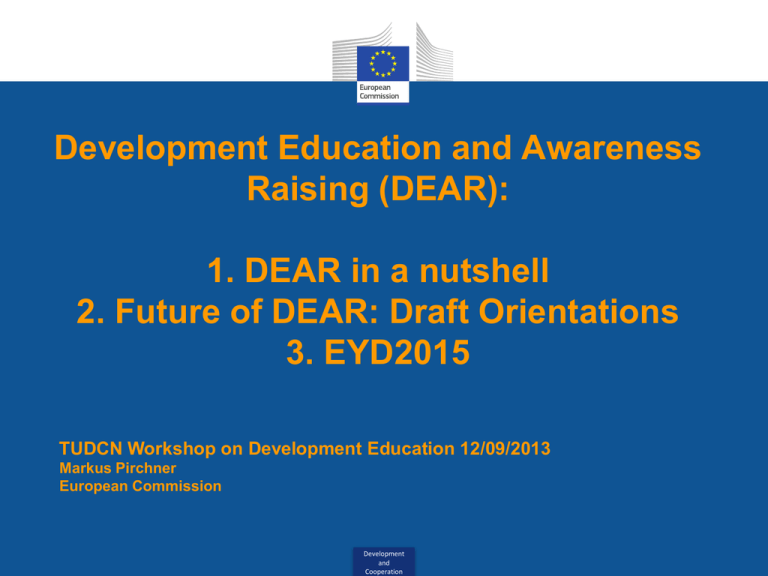
Development Education and Awareness Raising (DEAR): 1. DEAR in a nutshell 2. Future of DEAR: Draft Orientations 3. EYD2015 TUDCN Workshop on Development Education 12/09/2013 Markus Pirchner European Commission Development and Cooperation Disclaimer • It must be underlined that negotiations on the involvement of the co-legislators in programming are still on-going with the European Parliament and the Council. • Therefore the discussions taking place here may not prejudge the outcome of these negotiations, in particular concerning the specific objectives and priorities for each programme fixed in the Regulations themselves or in future delegated acts. • The Commission has also proposed to hold a Strategic dialogue with the European Parliament by which the latter will be able to exert an ex ante political control of the objectives, priorities and allocations to be included in the Multiannual Indicative Programmes before they are adopted. DEVCO 1. What is DEAR? DEAR in a nutshell: DEVCO • Aim: "Fostering EU citizens' awareness and mobilization for development issues" • Two forms / two approaches: • Development Education: formal & non-formal • Awareness Raising • Implementation: • +- 30 Million EURO/a (2007-2013) made available through NSA-LA budget lines • Used to co-finance activities proposed by CSOs & LAs • Implementation modus: mostly Calls for Proposals 3 Development and Cooperation 2a. Basis of new orientations: DEVCO • Based on: - 2010 DEAR study: strategy & consultation - May 2012 stakeholder consultation meeting - DEAR Staff working paper: - proposal of the COM for new DCI 2014-2020 - endorsement through Council of EU of 15/10/2012 confirming that "the EU will continue to promote a strategic approach to increase the level and quality of DEAR". • Taking into consideration: - operating in 28 EU MSs plus (potential) candidate countries - no one size fits all - fluid situation: evolving strategies in MSs, some without strategy 4 Development and Cooperation 2b. Outline of draft orientation for DEAR in new TP DEVCO • Clarify & explain DEAR "raison d'être" • A wider target group: different types of intl., natl, and local public institutions, academic, research centres, non-profit media and civil society organisations • Opening DEAR beyond Europe -> global solidarity between citizens from EU, developing and middle income countries • DEAR Reference point at EU level: Re-affirmed importance of capitalization, capacity building and networking among Member States, DEAR Stakeholders and the EU 5 Development and Cooperation 2c. Outline of draft orientation for DEAR in new TP DEVCO • Guiding principles: • added value and complementarity with Member States' DEAR policies and programmes • Pan-European dimension • Alignment with the main "development issues". • Evolving & limited number of priority sectors • Two strategic objectives: • A) Raise public awareness and mobilise the public regarding development issues on a European scale • B) Promote development education 6 Development and Cooperation 3a. Why an EY on Development in 2015? DEVCO • 2015 is key for the achievement of the MDGs • Reality check of our policy framework, the 'Agenda for Change' and 'Decent life for All' • Request of EP and the EESC, CONCORD Europe, taken up by President Barroso ► Such a EY would help to mobilize Europe-wide momentum for the development agenda 7 3b. Objective of the EYD2015 DEVCO inform and show results of EU development cooperation to EU citizens stimulate active interest of EU citizens in development cooperation, make them aware of their responsibilities and opportunities show the mutual interest of development cooperation in an increasingly inter-dependent world 8 Thank you for your attention! DEVCO • Markus PIRCHNER • European Commission – Directorate-General for Development and Cooperation — EuropeAid , DEVCO/D/2 • Unit “Civil Society, Local Authorities" • http://ec.europa.eu/europeaid/how/finance/dci/non_state_a ctors_en.htm • Staff Working Paper: • https://webgate.ec.europa.eu/fpfis/mwikis/aidco/images/b/b 4/DEAR_SWD_2012_457_STAFF_WORKING_PAPER_EN.pdf 9
